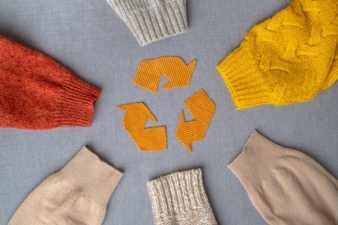02.11.22 – Cost of living crisis
Secondhand fashion is on the rise
The cost of living crisis will drive more consumers towards secondhand fashion, with the global apparel resale market set to grow 85.5% between 2022 and 2026.
While secondhand markets, charity shops and vintage shops have long been a popular way of buying apparel to access lower prices and more unique items, the global apparel resale market has grown rapidly over the past few years as new online platforms have emerged, and sustainability concerns have grown in tandem with consumer desire for more affordable fashion, says GlobalData.
The leading data and analytics company’s latest report, ‘Apparel Resale Market Size and Trend Analysis, 2016-2026’, reveals that between 2016 and 2021, the global resale market grew by an impressive 109.4%, and in 2022, it is forecast to experience further growth of 31.0% to $182.4 billion, as soaring inflation drives shoppers to seek out cheaper apparel options and find alternative ways of making money by clearing out their closets.
Fast fashion are trying to get onboard
Emily Salter, Senior Apparel Analyst at GlobalData, comments: “With the growth of online platforms such as Depop and Vinted, fast fashion players are also trying to get onboard to stay relevant, with Zara the latest to announce the launch of its own resale service. Though these services will only account for a small percentage of retailers’ total revenue and do little to truly increase their circularity, as they will still be dependent on pushing brand-new items too, retailers will hope to boost their sustainability credentials. As a result of the ever-growing choice of platforms to choose from, GlobalData forecasts that the resale apparel market will increase by $155.9 billion between 2022 and 2026, reaching $338.4 billion in 2026.”
While clothing is set to be the fastest growing segment of the resale apparel market out to 2026, footwear is not far behind.
Salter continues: “Although consumers have generally been less likely to purchase secondhand shoes due to hygiene concerns and items quickly showing signs of wear, the resale trainer market is continuing to gain popularity as streetwear fans seek out limited edition styles on platforms such as StockX and GOAT.”
Luxury accessories market with lower growth
Luxury is a prominent area for resale, with hype focused on designer accessories, especially handbags, as consumers perceive these items to be good investments and more specialist platforms such as Cudoni and Rebag have emerged to meet demand. Salter adds: “Despite this demand, secondhand luxury prices still remain inaccessible for many shoppers, and this will contribute to the resale accessories market seeing lower growth than clothing and footwear out to 2026.”

